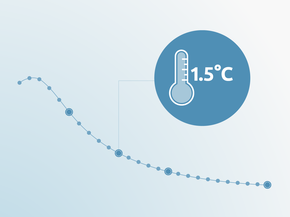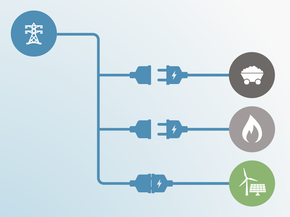Assumptions
Global Warming Potentials
Previous assessments of the Climate Action Tracker used the global warming potentials (GWPs) from the IPCC’s Second Assessment Report (SAR). For this assessment we have updated all figures and time series to GWPs from the Fourth Assessment Report (AR4).
NDC pledge
The NDC, 2020 and 2050 targets were calculated from the national inventory submissions (UNFCCC, 2017), based on information provided in the third biennial report (Ministry of Energy of the Republic of Kazakhstan, 2017). Since the targets include LULUCF, these were converted to values excluding LULUCF for comparability purposes assuming a net-net approach in light of other information. For both 2030 and 2050 we decided to use a range for LULUCF estimates in these years in order to better reflect the uncertainty of projections.
The Kyoto pledge is calculated based on the official documentation provided by the UNFCCC (UNFCCC, 2012a, 2012b). We calculated Kazakhstan’s LULUCF accounting quantities in 2020 for afforestation, reforestation and deforestation using the current Kyoto Protocol’s rules. Forest management was calculated also with current Kyoto rules, with the cap set at 3% of base year or 15% of forest management, whichever is lower.
Historical emissions
Historical data are based on most recent national inventory submissions reported in AR4 GWPs (UNFCCC, 2018).
Current policy projections
Current policy projections stem from the “with measures” scenario from the BR CTF submission workbook Table 6(a) (Ministry of Energy of the Republic of Kazakhstan, 2017). Growth rates from the “with measures” scenario were applied to the most recent historical year data (2016).
All scenarios in Kazakhstan’s national communication assume an annual GDP growth of an average of 3.5% till 2020 and 3% after 2020. The growth assumptions until 2020 lie slightly above forecasts by the IMF and World Bank, which project annual GDP growth rates of average of 2.9% and 2.8%, respectively (IMF, 2017; Ministry of Energy of the Republic of Kazakhstan, 2017; World Bank, 2018a).
The “with measures” scenario includes measures and policies to reduce greenhouse gas emissions that have been taken and are planned to be adopted in the near future. The majority of these measures possess sufficient certainty to be treated as a current policy scenario in our analysis. They include the plan of measures for the development of alternative and renewable energy sector in Kazakhstan with aims for total installed capacity of renewables to reach 1,700 MW by 2020; the concept for the development of the fuel and energy complex which aims to put a nuclear power plant with the capacity of 1GW into operation in 2030, as well as all new or existing processes related to energy efficiency improvements (Ministry of Energy of the Republic of Kazakhstan, 2017).
Further analysis
Latest publications
Stay informed
Subscribe to our newsletter






